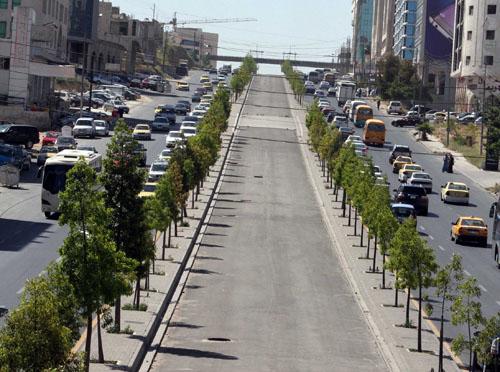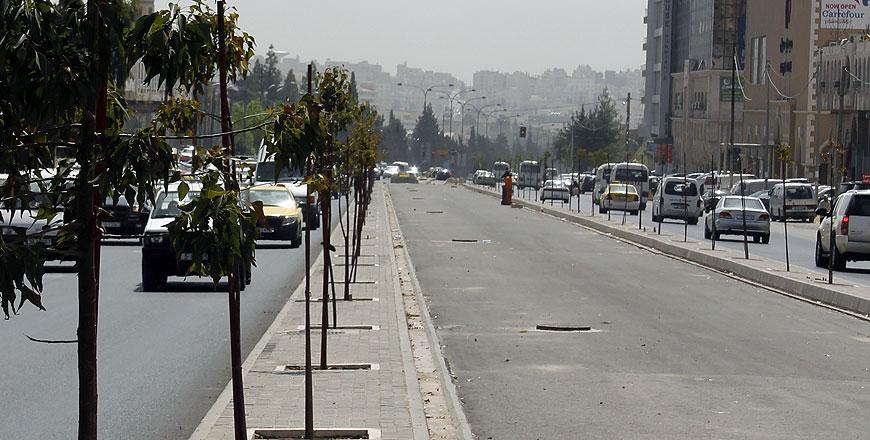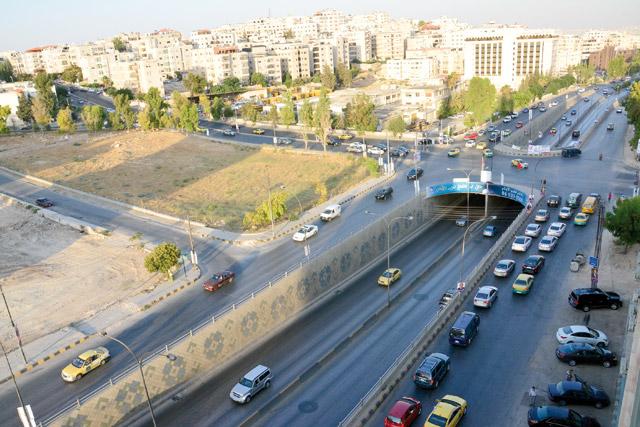You are here
Work on Amman’s second BRT package to start next week
By JT - May 17,2015 - Last updated at May 17,2015

AMMAN — The Greater Amman Municipality (GAM) will start working on the second package of the Bus Rapid Transit (BRT) at the beginning of next week, the infrastructure executive director of the project, Ahmad Malkawi, announced Sunday.
He noted that the second stage will cost JD8.147 million, according to a GAM statement sent to The Jordan Times.
The new package includes establishing a four-kilometre BRT route extending from the intersection of Mohammad Ali Jinnah and Princess Basma streets in Abdoun, and through Princess Basma and Prince Ali bin Al Hussein streets all the way to Ali Bin Abi Taleb Street in Ras Al Ain, Malkawi said in the statement.
He added that workers will begin operating machinery in project areas “in the next few days”.
Work on the second phase will continue for 420 days, he noted.
The BRT’s first phase includes three sections with a total length of 32 kilometres, Malkawi explained.
The first section starts at Sweileh Circle and passes through Queen Rania Street, the Sports City area, and Shahid and Istiqlal streets, and ends at Al Mahatta area, he said.
This lane has been partially completed.
As for the second part, Malkawi said it will start from the Jordan Museum in the Ras Al Ain neighbourhood and end at the Sports City passing through Princess Basma Street and the 5th Circle.
The third part will extend between Al Mahatta area and the Customs Department in Muqabalein, passing through Yarmouk Street and the Middle East Circle, Malkawi added in the statement.
The multimillion-dinar project, which GAM embarked on in 2009, entails operating premium, high-capacity buses that can carry more than 120 passengers and will run on a three-minute frequency during peak hours on segregated lanes along Amman’s busiest corridors.
Work on the project stopped in the summer of 2011 amid concerns over its feasibility and funding, and the Cabinet subsequently officially suspended it and halted all related tenders.
In 2013, the government decided to go ahead with the project, as part of a plan that seeks to provide transport solutions and ease traffic congestion in the capital.
Related Articles
AMMAN — The Greater Amman Municipality (GAM) will start work installing new bus lanes in the capital in the coming days, an official announc
AMMAN — After resuming the municipality’s work on the Bus Rapid Transit (BRT) in 2013, the Greater Amman Municipality (GAM) officials on Sat
AMMAN — The Greater Amman Municipality (GAM) will start construction work at the Sahafa (Press) Tunnel section of the Bus Rapid Transit (BRT


















